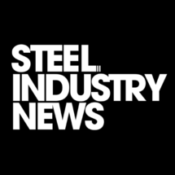Key Takeaways
✓ Nucor has held its CSP HRC base price steady at $875 per ton for three weeks in a row, with CSI at $935 per ton.
✓ Stable pricing reflects balanced supply and demand in the U.S. steel sector, particularly in construction and automotive markets.
✓ Price consistency benefits distributors, end-users, and investors by reducing risk and providing predictability in project planning.
✓ Compared to volatile global steel markets, Nucor’s steady stance signals strength and resilience in the American steel industry.
Introduction
Nucor Corporation, the largest steel producer in the United States, announced that it would hold its steel prices steady for the third week in a row. As of the week of September 8th, the CSP Hot Rolled Coil (HRC) base price remains at $875 per ton across all producing mills, with the exception of California Steel Industries (CSI), which has set its CSP HRC base price at $935 per ton.
This pricing decision reflects both market stability and Nucor’s cautious approach to balancing supply, demand, and competitive positioning within a volatile global steel market. At a time when raw material costs, end-user demand, and international pressures all weigh heavily on steelmakers, Nucor’s choice to hold prices steady instead of raising or discounting sends a strong signal of confidence.
Nucor’s Pricing Strategy in Context
The Hot Rolled Coil (HRC) serves as the benchmark product for the steel industry in North America, setting the tone for negotiations with service centers, distributors, and large manufacturers. By fixing its CSP HRC base price, Nucor effectively creates a reference point against which competitors and customers alike must measure.
At $875 per ton, Nucor has communicated stability. The higher CSI price of $935 per ton reflects regional realities, particularly California’s logistical challenges and higher input costs. By holding the line on pricing across three weeks, Nucor has offered predictability in a market often prone to volatility. For distributors and fabricators wary of sharp fluctuations, this stability is critical for managing inventory decisions and protecting margins.
Steel prices are famously sensitive to demand cycles, raw material costs, and global trade dynamics. A sharp increase or decrease can send ripples throughout multiple industries. By keeping pricing steady, Nucor limits unnecessary disruption and portrays an image of a company confident in market fundamentals.
A Snapshot of Nucor’s Recent Weekly Pricing
Reviewing Nucor’s recent updates illustrates the significance of this decision. For the weeks of August 25, September 1, and September 8, 2025, the base price remained fixed at $875 per ton, with CSI consistently priced at $935. The three-week streak reflects an intentional strategy, not passive coincidence.
The pricing pattern shows that Nucor has identified and is reinforcing a market floor that it believes is fair and sustainable. For buyers, this means they can proceed with forward purchases without fearing that prices will tumble tomorrow. Stability like this fosters confidence when building inventories and planning future contracts.
Factors Driving Nucor’s Pricing Decisions
Several dynamics underpin this pricing decision. On the supply side, mill utilization rates remain healthy. Nucor’s production model, centered around electric arc furnaces with efficient scrap inputs, allows it flexibility without forcing aggressive discounting. Raw material prices, including scrap steel, have fluctuated modestly but remain within controlled ranges, ensuring that margins hold steady. Energy costs, while a concern in certain industrial sectors, remain manageable for Nucor due to its efficiency advantage compared to traditional blast furnaces.
On the demand side, the steel-consuming sectors provide steady outlets for products. The automotive industry continues to churn out vehicles at moderate but consistent volumes. The construction sector, buoyed by infrastructure investment initiatives, has been particularly supportive of steel pricing. Similarly, steady industrial manufacturing continues to bolster the market for flat-rolled steel products.
Competitive pressures also shape decision-making. With global steel producers struggling in volatile markets, the U.S. market benefits from relative insulation due to tariff protections. Competitors in North America observe Nucor’s price holds closely, often aligning their own policies to avoid cutting prices unnecessarily.
Together, these forces paint a picture of balance. Although risks and pressures exist, Nucor’s ability to hold pricing demonstrates that the market has entered a phase of stability.
Why Stability Matters for the Steel Supply Chain
Price stability extends across every corner of the steel supply chain. For distributors and service centers, steady pricing reduces unnecessary risk. When distributors build inventories, consistency allows them to project costs and revenues without fear of buying at the wrong time. For customers in manufacturing, construction, or the automotive industry, predictable steel costs mean more reliable project timelines and budget allocations.
Investors, too, value pricing stability because it signals operational control and resilience, rather than a boom-or-bust cycle. Public steel companies like Nucor are scrutinized as much for their discipline as for their output. By resisting erratic adjustments, Nucor builds credibility with stakeholders, demonstrating that it is navigating turbulent economic waters with care.
In effect, this is about more than just a ton of steel. Pricing stability is a form of communication – a message to buyers, partners, and investors that the company is in control of its path forward.
Expert Insights
Industry leaders and analysts have long emphasized the value of stability in steel pricing. David Burritt, CEO of U.S. Steel, has remarked that predictable prices create efficient planning environments for customers and manageable margins for mills. Likewise, Philip Bell of the Steel Manufacturers Association has acknowledged that flat-rolled steel demand correlates closely with infrastructure and construction activity, making the need for predictability essential. Nucor’s current pricing stability aligns with these views.
Looking Ahead: Fall 2025 Outlook
Looking to the remainder of 2025, several variables will determine whether these base prices remain in place. Scrap pricing is unlikely to shift significantly unless unforeseen supply disruptions occur. Infrastructure spending will likely continue to support healthy construction demand, while automotive output may soften slightly if higher interest rates persist in limiting consumer purchases.
Imports remain a wild card. Should global currency fluctuations or trade policy shifts make overseas steel more competitive in the U.S. market, pressure could mount on domestic producers to adjust. For now, however, Nucor has the advantage of a relatively protected domestic ecosystem. Other important factors are the IEEMA Tariffs and inflation numbers.
Steel buyers should see short-term stability extending over the coming months but keep one eye on mid-term shifts that could develop as global markets ebb and flow.
Conclusion
Nucor’s pricing decisions for September 2025 underscore the company’s strategy of discipline, stability, and confidence. By maintaining its CSP HRC base price at $875 per ton and CSI’s at $935 per ton over a three-week period, the company has given its partners and customers a valuable measure of predictability in uncertain times.
For the supply chain, this stability translates directly into reduced risk and stronger planning capability. For the broader industry, it offers a firm benchmark that helps shape competitive expectations. Against the backdrops of volatility in other regions, the U.S. market stands as an example of moderation and health.
SOURCES
Nucor Corporation — Official Press Releases & Investor Relations
https://nucor.com/news
American Iron and Steel Institute (AISI) — Weekly Production Reports
https://www.steel.org/industry-data/weekly-production
U.S. Geological Survey (USGS) Steel and Iron Ore Statistics
World Steel Association Reports, 2024-2025
U.S. Department of Commerce – International Trade Administration Steel Data
Statements from U.S. Steel and Steel Manufacturers Association
Check out our most recent articles below:
- Nucor’s Six-Week Price Surge: What It Signals for the Steel Market
- Nucor Increases Steel Prices Again
- Steel Industry and Manufacturing Demand: Understanding the Critical Decline in HVAC and Agricultural Equipment Sectors in 2025
- Steel Prices in November 2025: Market Dynamics, Price Drivers, and Industry Outlook
- The Dodge Momentum Index October 2025: Understanding Commercial Planning Momentum and Its Impact on Construction Spending
📬 Enjoying this article? Do not miss the next one.
SUBSCRIBE below to the Steel Industry News email newsletter to get the latest updates delivered straight to your inbox. Includes a comprehensive reporting of all key topics impacting the steel industry. 🌍The Most Recent Steel News Reports — in one easy-to-read weekly format
🔐 Annual Plan: Just $300/year – that’s 6 months free . – 💰 Best value of unbiased, timely reporting in the industry.








